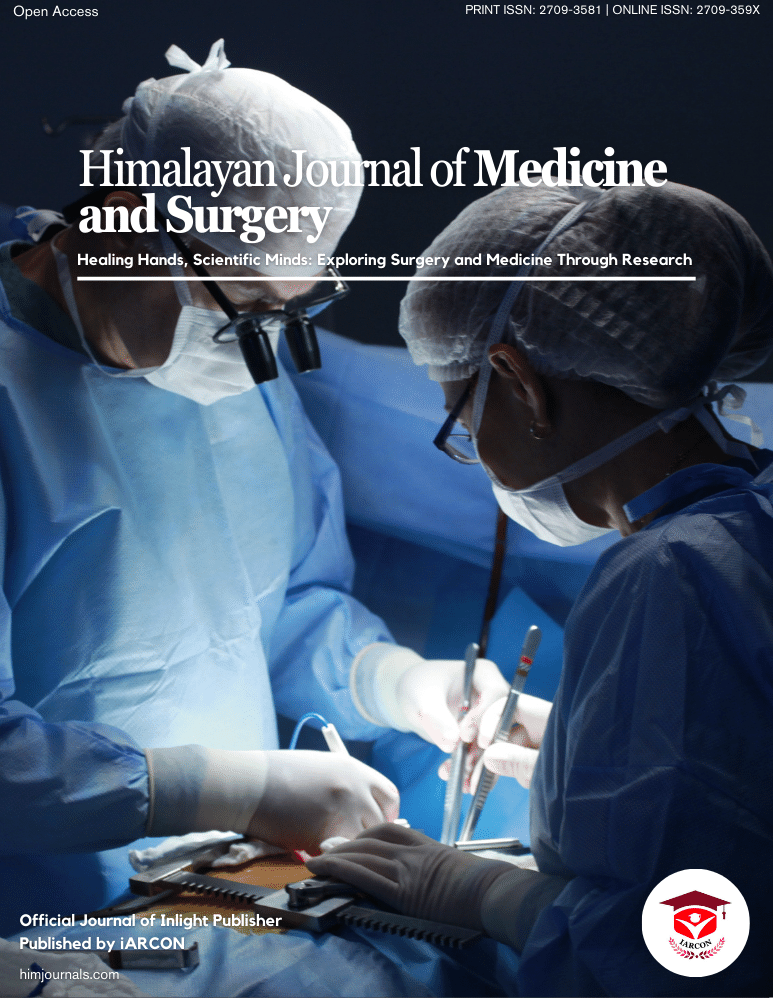This study was conducted in a tertiary care hospital IGMC, Shimla, Himachal Pradesh on adult patients on ART. There were a total of 103 patients with a total of 131 ADRs. Out of all patients, there were 56 (54.4%) males and 47 (45.6%) females with male to female ratio of 1.19:1. Similarly, Anwikar SR. et al.,(2011) [7] reported that in their study there were 1844 patients, of which 1198 (65%) were male and 646 (35%) were female. In a study by Reddy AK et al., (2013), [4] there were 208 males and 92 females with male to female ratio of 2.26:1. Gabbita P et al.,(2018) [8] in their study observed that a total of 453 patients were treated by the 1st line antiretroviral TLE regimen of which 211 were male patients, 241 were female patients and 1 transgender patient.
Age group of 18-35 years was the most affected with 45 (43.7%) patients followed by 36-50 years with 42 (40.8%) patients. Most of the males were in the age group of 18-35 years i.e 30/56 (53.5%), while females were predominantly in age group of 36-50 years with a count of 23/47 (48.9%) females. Mean age of males was (36.91±10.04 years) lower than that of females (40.17±11.14 years). Similarly, Patel PT et al., (2015) [3] observed that the most common age group taking ART was less than 35 years with 68 (62.3%) patients and Kumari R et al., (2017) [9] observed that there were 119/280 (42.5%) patients in age group of 18-30 years.
In our study we observed a total of 131 ADRs and out of which 61 ADRs were reported in males and 70 in females. Similarly, in a study by Patel PT et al., (2015) [3], females (60.55%) had higher prevalence of ADRs than males (39.45%). Similar results were found in previous study by Patel NM et al., (2015) [3] females were reported to have higher incidence of ADRs (1.80 ADR per patient, 117/65) than males (1.57 ADR per patient, 157/100). But in study by Kiran Reddy AV et al., (2013) [4] males had higher prevalence of ADRs as compared to female patients. Possible explanation for this gender difference in ADR incidence could be a gender specific difference in in body mass index, fat composition, drug susceptibility, hormonal effects on drug metabolism and elimination, or genetic constitutional differences on the levels of various enzymes although the same has not been proven conclusively [8], [4] & [10].
In our study, the most common ADRs were haematological ADRs (46; 44.66%). Out of which there were 15 cases of anemia, 9 cases of leukopenia, 7 of thrombocytosis and 10 and 5 cases of microcytosis and macrocytosis respectively. Gabbita P et al., (2018) [8] reported in their study that the haematological ADRs presented as anemia (31;39.2%) and pancytopenia (1;1.26%). Reddy AK et al., (2013) [4] observed that 15 (9.37%) ADRs were related to haematological system with 8.13% cases with anemia. Kumari R et al.,(2017) [9] observed that blood and lymphatic system associated ADRs included anaemia (52, 22.80%) and pallor (4, 1.75%).
In our study, cutaneous ADRs were rash and itching seen in 11 (10.67%) patients. Gabbita P et al., (2018) [8] reported cutaneous ADRs as rash in 30 (37.9%). Reddy AK et al., (2013) [4] reported rash in 8.75% and maculopapular rash in 7.5% cases. Kumari R et al., (2017) [9] reported skin rashes in 18 (7.89%). There were 3 (1.31%) patients who presented with Stevens Johnson Syndrome.
There were 27 (26.21%) cases of gastrointestinal ADRs in our study with 15 (14.5%) cases of nausea and 12 (11.65%) cases of gastrointestinal intolerance. In study by Reddy AK et al., (2013), [4] there were 38 (23.75%) cases of gastrointestinal ADRs. Kumari R et al., (2017) [9] observed 11 (4.82%) cases of abdominal pain, 8 (3.5%) cases of vomiting, 5 (2.19%) cases of diarrhoea and 5 (2.19%) cases of anorexia. There were 3 (1.31%) cases of gastric intolerance in their study. Reddy AK et al., (2013) [4] observed 13.13% cases of gastritis and 6.87% cases of anorexia.
We observed a total of 12 (11.65%) cases of hepatitis out of which there were 3 cases each of mixed and hepatocellular liver toxicity and 6 cases of transaminitis. Reddy AK et al., (2013) [4] observed 2 (1.25%) cases of liver ADR while Kumari R et al., (2017) [9] observed 12 (5.26%) cases with raised liver enzymes.
In our study there were 5 (4.85%) cases who reported with nephrotoxicity similarly Gabbita P et al., (2018) [9] reported 6 (7.59%) cases with renal failure and 2 (2.53%) cases with acute kidney injury. Nephrotoxicity was observed in 1 (1.26%) case.
CNS symptoms like headache or insomnia (7;6.8%) and neuropathy (3;2.91%) were also reported in our study. there were 19 (11.87%) cases of CNS related ADRs in a study by Reddy AK et al., (2013) [4] and Kumari R et al., (2017) [9] reported insomnia in 24 (10.52%) and headache in 16 (7.01%) patients. Parasthesia was reported by 3.75% of patients in study by Reddy AK et al., (2013) 4] while Kumari R et al., (2017) [9] observed peripheral neuropathy in 4 (1.75%) of cases and tremors in 3 (1.31%) cases. Rukmangathen R et al., (2020) [11] observed that nervous system related disorders were the most commonly observed ADRs in patients receiving TLE regimen which includes drowsiness/giddiness (53.62%) followed by headache (15. 94%) and nightmares (8.69%).
We observed that 7 (6.8%) patients had fatigue, 5 (4.85%) had lipoatrophy and 1 had pancreatitis as an ADR to ATT. Anwikar SR et al., (2011) [6] observed lipodystrophy in 0.38% cases. Rukmangathen R et al.,(2020) [11] observed lipoatrophy in 20 (8.69%) cases and Reddy AK observed lipodystrophy and pancreatitis each in 2 (0.66%) cases.


